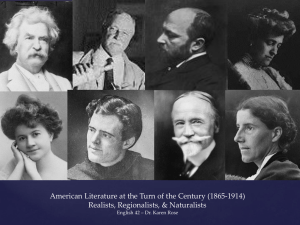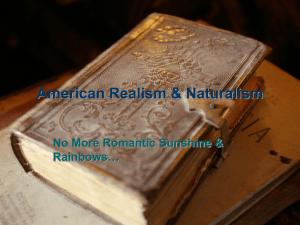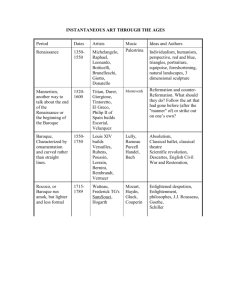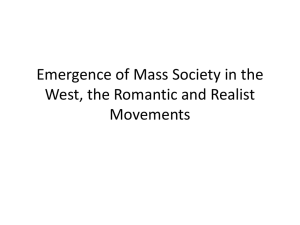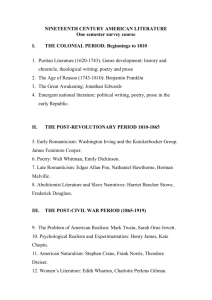American Realism.doc
advertisement
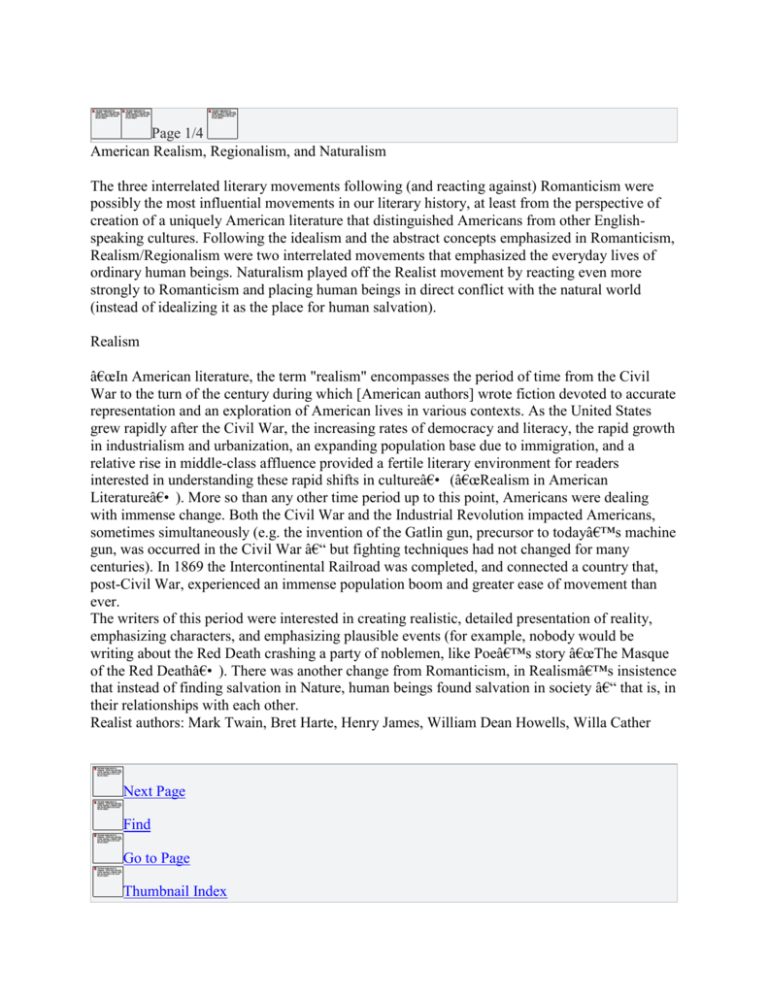
Page 1/4 American Realism, Regionalism, and Naturalism The three interrelated literary movements following (and reacting against) Romanticism were possibly the most influential movements in our literary history, at least from the perspective of creation of a uniquely American literature that distinguished Americans from other Englishspeaking cultures. Following the idealism and the abstract concepts emphasized in Romanticism, Realism/Regionalism were two interrelated movements that emphasized the everyday lives of ordinary human beings. Naturalism played off the Realist movement by reacting even more strongly to Romanticism and placing human beings in direct conflict with the natural world (instead of idealizing it as the place for human salvation). Realism “In American literature, the term "realism" encompasses the period of time from the Civil War to the turn of the century during which [American authors] wrote fiction devoted to accurate representation and an exploration of American lives in various contexts. As the United States grew rapidly after the Civil War, the increasing rates of democracy and literacy, the rapid growth in industrialism and urbanization, an expanding population base due to immigration, and a relative rise in middle-class affluence provided a fertile literary environment for readers interested in understanding these rapid shifts in culture― (“Realism in American Literature―). More so than any other time period up to this point, Americans were dealing with immense change. Both the Civil War and the Industrial Revolution impacted Americans, sometimes simultaneously (e.g. the invention of the Gatlin gun, precursor to today’s machine gun, was occurred in the Civil War – but fighting techniques had not changed for many centuries). In 1869 the Intercontinental Railroad was completed, and connected a country that, post-Civil War, experienced an immense population boom and greater ease of movement than ever. The writers of this period were interested in creating realistic, detailed presentation of reality, emphasizing characters, and emphasizing plausible events (for example, nobody would be writing about the Red Death crashing a party of noblemen, like Poe’s story “The Masque of the Red Death―). There was another change from Romanticism, in Realism’s insistence that instead of finding salvation in Nature, human beings found salvation in society – that is, in their relationships with each other. Realist authors: Mark Twain, Bret Harte, Henry James, William Dean Howells, Willa Cather Next Page Find Go to Page Thumbnail Index Image View Download a Copy Close

